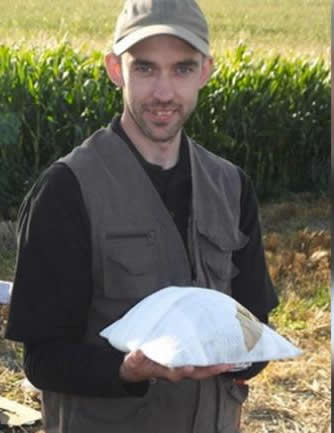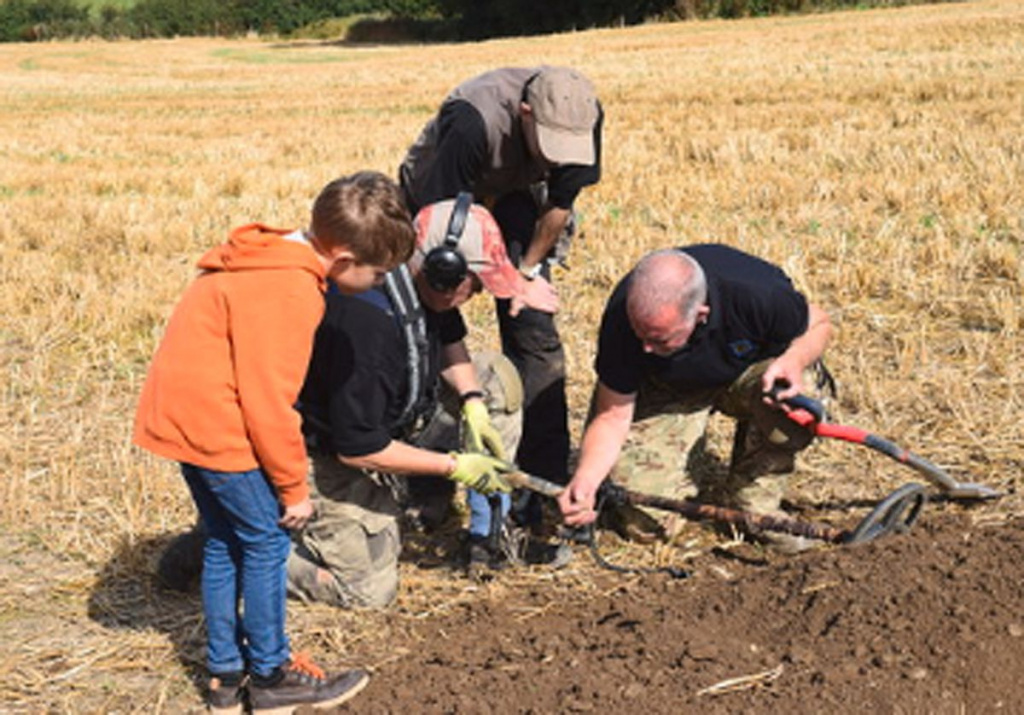Gobowen Roman coin hoard declared as treasure
A hoard of 337 Roman coins were declared treasure this week. The hoard was found by detectorist Darren Booth in a field in Gobowen, near Oswestry, on 8 September 2019. It has been named the “Gobowen hoard”.
The find
Darren had been a detectorist for five years and was a member of Historical Search Society, Mold.
Initial discovery

Darren Booth with the coins
Photo: PAS
In September 2019, he was out in the fields near Gobowen on a dig organised by the club. He had no specific plan for the trip but said that he “just went the opposite way to everyone else to avoid other detectorists“. After 20 minutes he picked up a “loud and crisp” signal and started digging “After removing the first small spadeful of soil, I could see a silver coin in the spoil. I had never found any coin like this before but judging by the thickness and the Latin inscription, I knew it was a Roman coin“
Within a few feet he found another one, and then another one. The club then taped off the area, searched and dug all the signals. Within an hour they had more than 60 coins. Then, a “deep, faint” signal revealed what Darren describes as something that “will stay with me forever; I could see lots of coin edges all stacked on edge, and they were silver. I felt very emotional, excited but also knew that I had found something that all detectorists dream of.”
Archaeological dig

The dig in action
Photo: British Museum Trustees
Darren immediately reported the find to Shropshire Museums and the PAS. A team led by experts, Peter Reavill from the PAS and Dr Susie White, went to recover the hoard.
Mr Reavill said: “Hoards of coins are what everyone thinks of as treasure but are amazingly rare from Shropshire. I am hugely grateful to the finder and his metal detecting club for following best practice guidelines of stopping digging and calling for help.”
The hoard
The hoard is believed to have been buried in AD69 to AD 70 during the rule of Emperor Vespasian.

The uncleaned hoard
Photo: British Museum Trustees
The coins were sent to the British Museum to be cleaned and investigated. Some of the silver denarius had lost some of their surfaces through corrosion but otherwise they were found to be in a reasonable condition. There was evidence that they had been in a leather pouch.
More than 270 of the coins were from the days of the Roman Republic. There were also coins from the reign of Tiberius and Vespasian.
The Gobowen Hoard will now be valued and made available for Shropshire Museums to put on display. Fay Bailey, head of Shropshire Museums and archives, said it was “important evidence of early Roman military activity in the area“.

